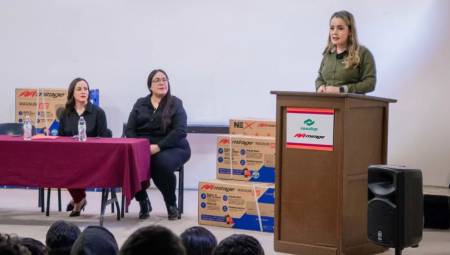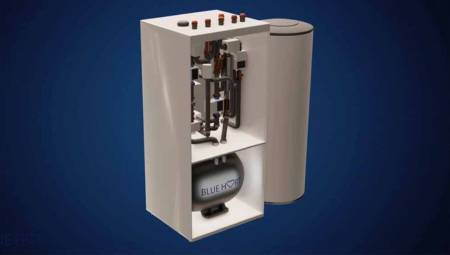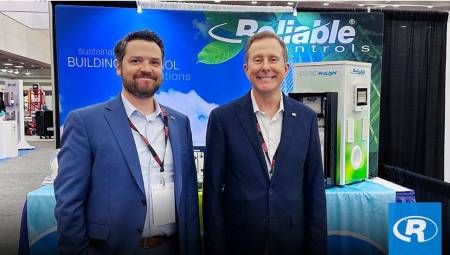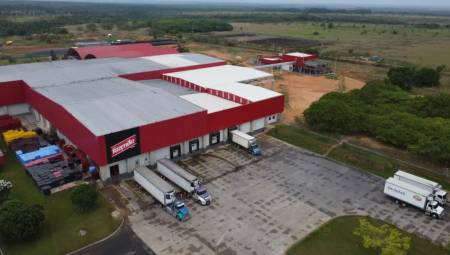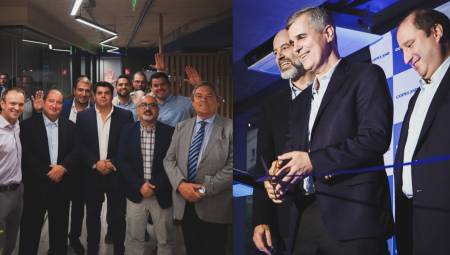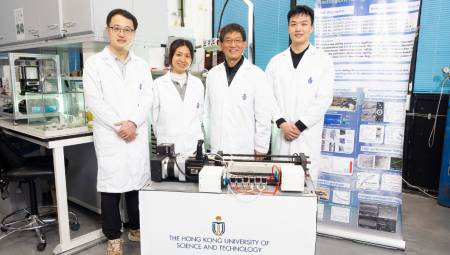 This article aims to help you make an informed decision about what the market needs and what you can do to adapt to it, with very little thought to do it successfully.
This article aims to help you make an informed decision about what the market needs and what you can do to adapt to it, with very little thought to do it successfully. by Fernando Gutiérrez*
Between 1990 and 1995, europe had a very interesting experience in the change of CFC refrigerants, the main cause of the thinning of the ozone layer. Some countries took as a basis the total elimination of chlorine as a harmful element, and solved the problem with the direct transition to the use of HFC's.
This operation forced the professionals to properly clean the mineral oil residues (MO) to place POE oils and the equivalent refrigerant of the HFC type there. Countries such as Sweden, and others that followed these guidelines, were involved in this.
In other countries, the offer recommended by the refrigerant producers was taken and a series of products were used in the substitution, mixtures of HCFC's, HFC's and HC's, which emulate the thermodynamic conditions of the applications to be replaced, and mainly due to their capacity and their chlorine content were able to return the oil to the crankcase of the compressor.
In some cases, and for safety, there was the convenience of replacing at least 50% of the amount of mineral oil contained by an alkylbenzene oil (in practice what the compressor crankcase contained), which with its additives improved and ensured that return of oil.
This solution simplified the practice of substitution for professionals since they would only have to change one refrigerant for another so that the operation of existing equipment could continue. However, all this paraphernalia became a maremagnum of supply, and so each producer of refrigerants tried to make a good deal with substitution, with prices much higher than the products that had been substituted, and for each CFC several products were proposed, which were not interchangeable with each other, nor mixable, given their different chemical composition.
For example, the R-12 had the possibility of replacing it with R-401 A, R-401B, R-401C, R-409A, R-409B, R-403C, DI-36, R-406A, etc. As a result of all this, a great confusion was created in the market, a great logistical problem for the maintenance services, and an almost absolute dependence on the producers chosen in each case.
With some products, once the CFC equipment was replaced to these mixtures, the producer of the same, did not want to continue its offer to the market, since the quantities demanded for the maintenance of these replaced equipment, were already too small to continue with the logistics and stopped producing them simply.
Current regulations for the availability of R-22
According to the provision in Europe for the supply of the product R-22, there is the possibility of delivery by producers of refrigerants of "virgin" product, until January 1, 2010. This option is not a big problem for producers, since R-22 is used as a raw material for many by-products for the formation of elastomers and fiber compounds, Teflon, among others, which without leaving the production plant serve for these applications, and therefore it is easy to maintain the demands that are needed until their total prohibition.
During the time from January 1, 2010 to January 1, 2014, the use of R-22 as a recycled product will be allowed, that is, it is an opportunity to use it in a possibly orderly transition, to adapt the equipment to new opportunities for its maintenance.
Options for replacing R-22
We will talk about two different parts: new equipment and existing equipment.
New equipment: basically in the new equipment it has already been replaced, since European regulations have been adapted, prohibiting products with chlorine such as R-22 progressively.
In refrigeration, it has not been possible to place in new equipment for some time another product other than R-404 A (or R-507) or in some applications R-134a.
In the A / C first the R-407C was used while the new product was developed for that application that is the R-410A, and it can be said that its application is already almost fully developed in these new equipment and also in other applications the R-134a is used.
Existing Equipment: Here are two types of solutions, namely:
• Option A: Adapt them to long-term refrigerants, which are already common and easy to reach in all parts of the world geography, such as R-404A in refrigeration or as R-407C, in the A / A equivalent to R-22 for that application.
• Option B: Adaptation to the various offer of HFC's with HC's. Use again a very wide offer with new alternatives that appear every day, using mixtures of HFC's with HC's (which effectively do not have chlorine) to perform a refrigerant replacement without changing the oil, as happened in the cfc replacement.
The result is a large number of offers, as is logical for the freedom of each producer in the defense of their interests, which again complicates the logistics, confusion, availability, of the entire compendium in that substitution. The only difference that exists between the substitution of CFCs in the years 90-95 with that of now and with R-22, is that before refrigerants were used still with some chlorine, but less stable than CFCs and now this philosophy has been changed with the composition of HFC's mixtures that carry I get some products of the HC's type, which are "miscible" with the mineral or alkylbenzene oils that exist in the refrigeration facilities.
The main problem is that another wide offer coexists again for the confusion of the professionals themselves, and so some producer, proposes three products, for the low, medium and high evaporation temperature that are: R-422D, R-422A and R-417A respectively. Others propose R-427A as a single product for all applications. Others the E-22 (still without ASRHAE classification), and how many more can emerge in favor of the commercial interests of producers?
All this is again another opportunity to develop the interests of the market in both aspects: on the one hand the ease for professionals in terms of their simplicity in replacing the product almost as it is, and on the other the economic amount to be received by the interests of the producers of refrigerants. It will therefore be the wise decision of those who have to choose which is the best path, but to help their understanding we will see in the next point, in which we will address a comparison of strengths and weaknesses of each option.
Strengths and weaknesses
Of the two options in the maintenance of existing equipment, depending on the option chosen.
It could be concluded that Option A is more professional, simplifies logistics, does not require being aware of the decisions of a producer, the availability of common products is easy throughout the world geography with only one product for refrigeration (R-404A) and another for air conditioning (R-407C), at cheap prices in relation to special products and with that offer of confusion.
As a negative to this recommendation, it is the availability that professionals find of some correct refrigeration circuit cleaning system. But this tool that represents "a new practice in refrigeration and air conditioning", is completely necessary for the professional, due to the easy decomposition of POE oils, and that in any case, can represent for the professional an opportunity to update the cleaning of all undesirable substances that may exist in the refrigeration facilities and that with cleaning for the adaptation to products of the HFC type is arranged by taking that option; and another is an opportunity to enter some economic amount for the use of Option A itself.
With the choice of Option B, it is only a matter of putting a product and replacing it with another, which in any case there is time to solve it until 2014, so you do not have to run in the practice of this option, until the market has chosen its path.
Reliability and current practices
There are already several European countries, including Spain, that are taking action in this regard.
On the one hand, in applications such as air conditioning in RENFE, AVE, and Metro Bilbao trains, the transition from R-22 to R-407C is being carried out. Some users, due to situations in which the refrigeration system has to be cleaned, are using the R-407C in the air conditioning; in Chiller applications that evaporate R-404A at -10ºC and in refrigeration also R-404A, therefore facilities are cleaned and adapted to these common products.
The wide range of HFC's with HC's, is generally a good solution and easy to apply. In theory the products are valid, but the few applications so far made are not of the total satisfaction of the users, either because they have not chosen the product correctly, or because the facilities themselves have some dragged problem of internal corrosion or because the return of oil to the crankcase is a bit complex and have problems in that miscibility / solubility necessary that is not the same as they had with oils of alkylbenzene or mineral type used in those substituted applications.
Conclusion
Do we want Option A? that simplifies the offer, logistics and price. Do we want Option B? that complicates supply, logistics and price, as well as possible confusion and dependence on specific producers.
The only drawback of Option A is the availability of a cleaning system for refrigerated circuits, which in any case the professional has to opt for its use, due to the decomposition of POE oils.
The market will evaluate the two options and take the most opportune, but from here we recommend the reduction of several products to solve the same problem.
* Fernando Gutiérrez is CEO and inventor of the fri3oilsystem. He has 35 years of experience in the refrigeration sector and more than 15 in work with research groups from different nations. You can be contacted at the fgutierrez@ofiwet.com email.


